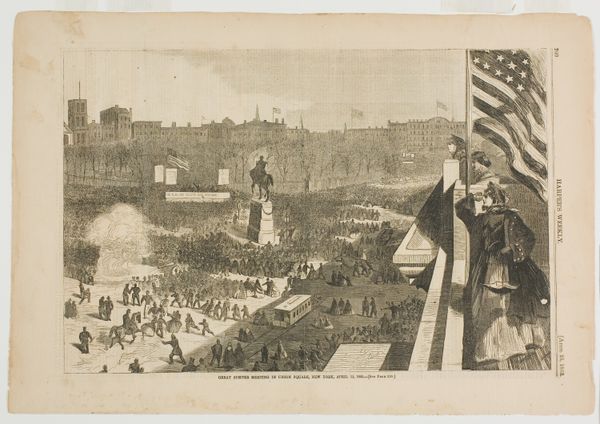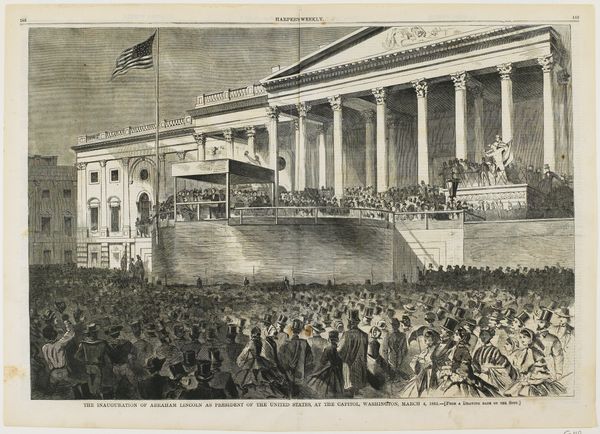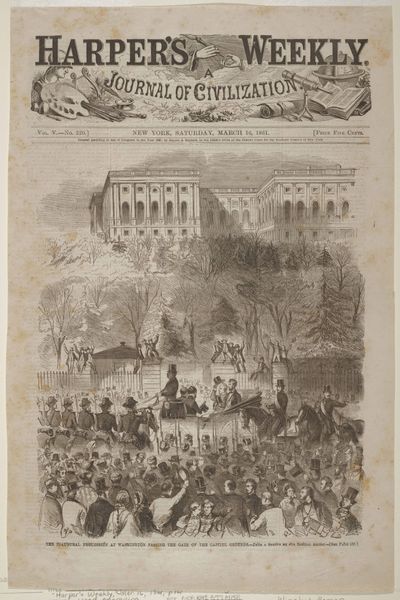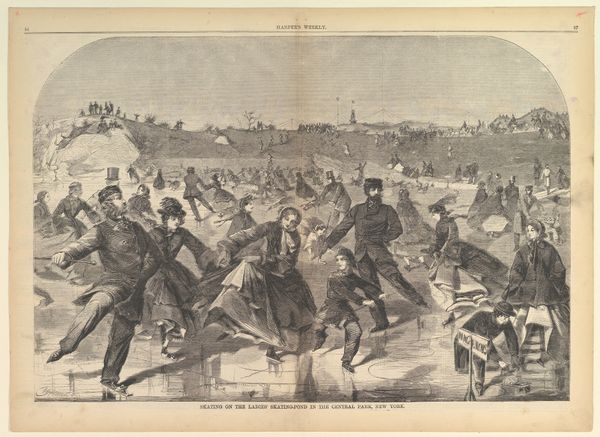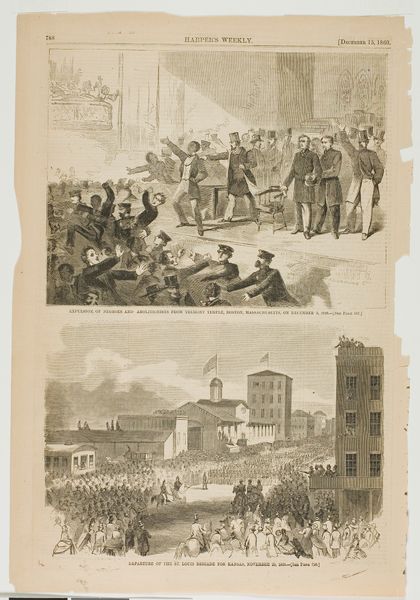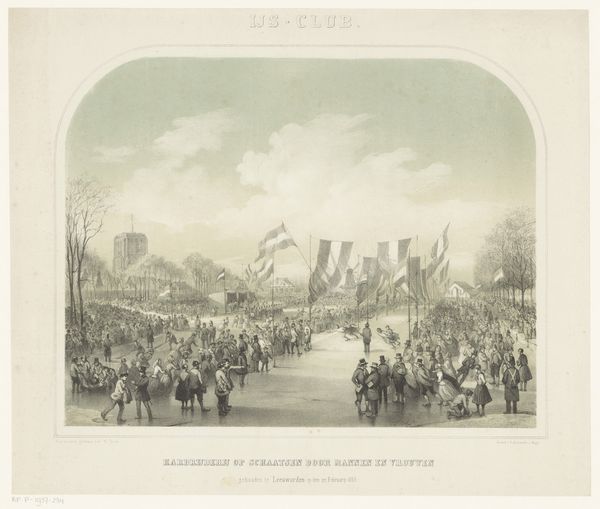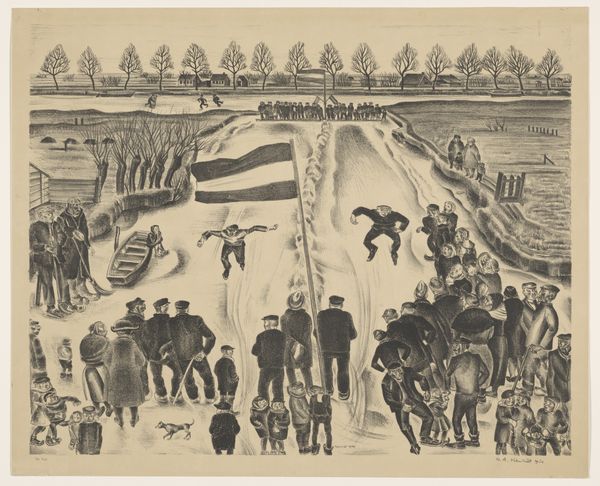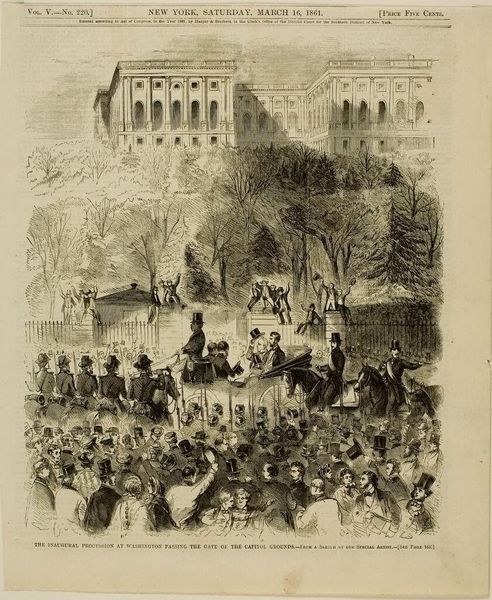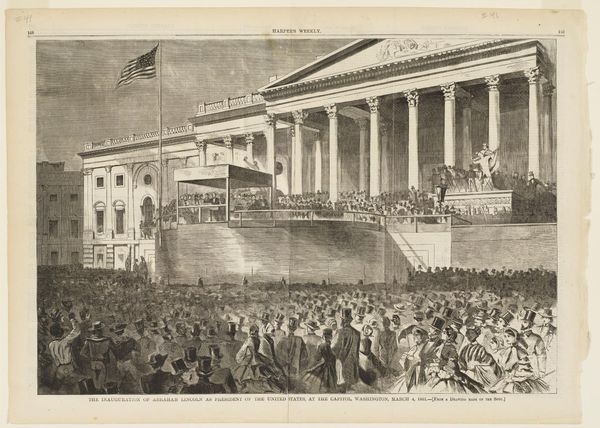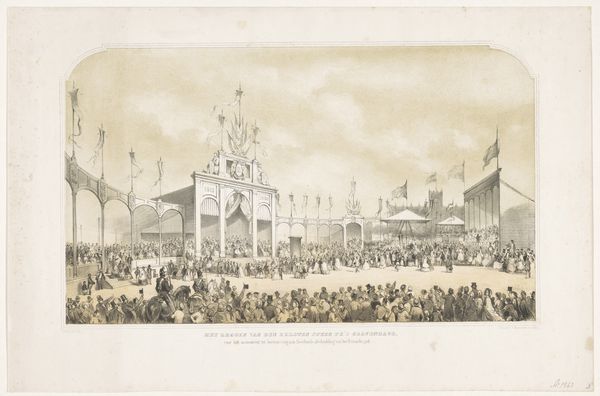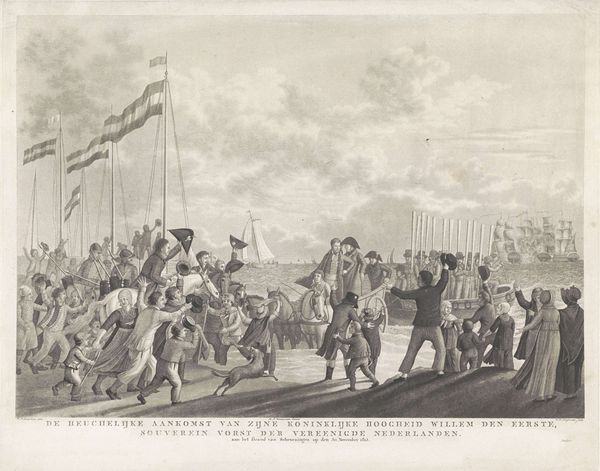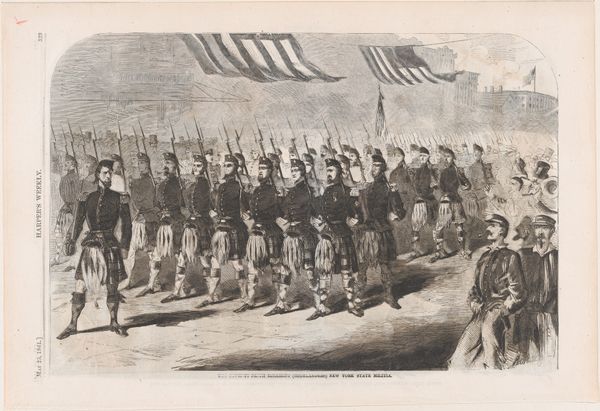
print, woodcut, wood-engraving, engraving
#
16_19th-century
#
narrative-art
# print
#
woodcut
#
united-states
#
cityscape
#
history-painting
#
wood-engraving
#
engraving
Dimensions: 13 3/4 x 9 1/8 in. (34.9 x 23.2 cm)
Copyright: Public Domain
Curator: Winslow Homer’s 1863 wood engraving, "The Great Sumter Meeting in Union Square," presents a fascinating snapshot of Civil War era public sentiment. Editor: It’s immediately striking, this crowded composition! Almost claustrophobic. All these tiny figures compressed together… It gives you a real sense of the mass of people involved. And the hazy smoke, like something’s brewing just beneath the surface. Curator: Exactly. What's happening, in brief, is this. After the bombardment of Fort Sumter, a massive patriotic rally was staged in New York's Union Square. It was a deliberate display of Northern resolve. The location, the flags, the speeches all contributed to that political statement. Editor: It's interesting how Homer chose wood engraving. Think about the labor involved: cutting away at the wood, line by painstaking line. The image could then be reproduced at scale in Harper’s Weekly. A medium that allows a message of Union to be easily and rapidly circulated amongst a broad readership. Curator: Absolutely, the circulation is key. Prints like these shaped public opinion and bolstered support for the war effort, particularly amongst urban populations. But the composition itself plays a role too. The image flattens the crowds, suggesting unanimity, though we know there was far more political and social complexity. Editor: You see it too in the materiality: the stark contrast between light and shadow. The image doesn’t just illustrate, it also manufactures a certain moral clarity. There's the mass production of patriotic fervour right there! The medium itself promotes a singular, unwavering point of view. Curator: Indeed. The artwork reflects and reinforces the period’s nationalistic fervor. Homer subtly uses visual devices to promote a message of unified resolve amidst national crisis. Editor: Looking closely reveals how the artist has managed the making and distribution of collective feeling. It's not simply about recording a historical event but engineering consent through material means. Curator: It leaves you pondering on the profound intertwining between politics and representation, right? Editor: For sure. An insightful example of the war being waged not just on the battlefield but also through print culture.
Comments
No comments
Be the first to comment and join the conversation on the ultimate creative platform.
